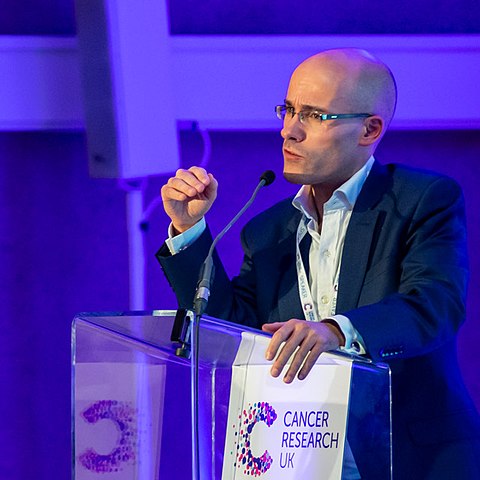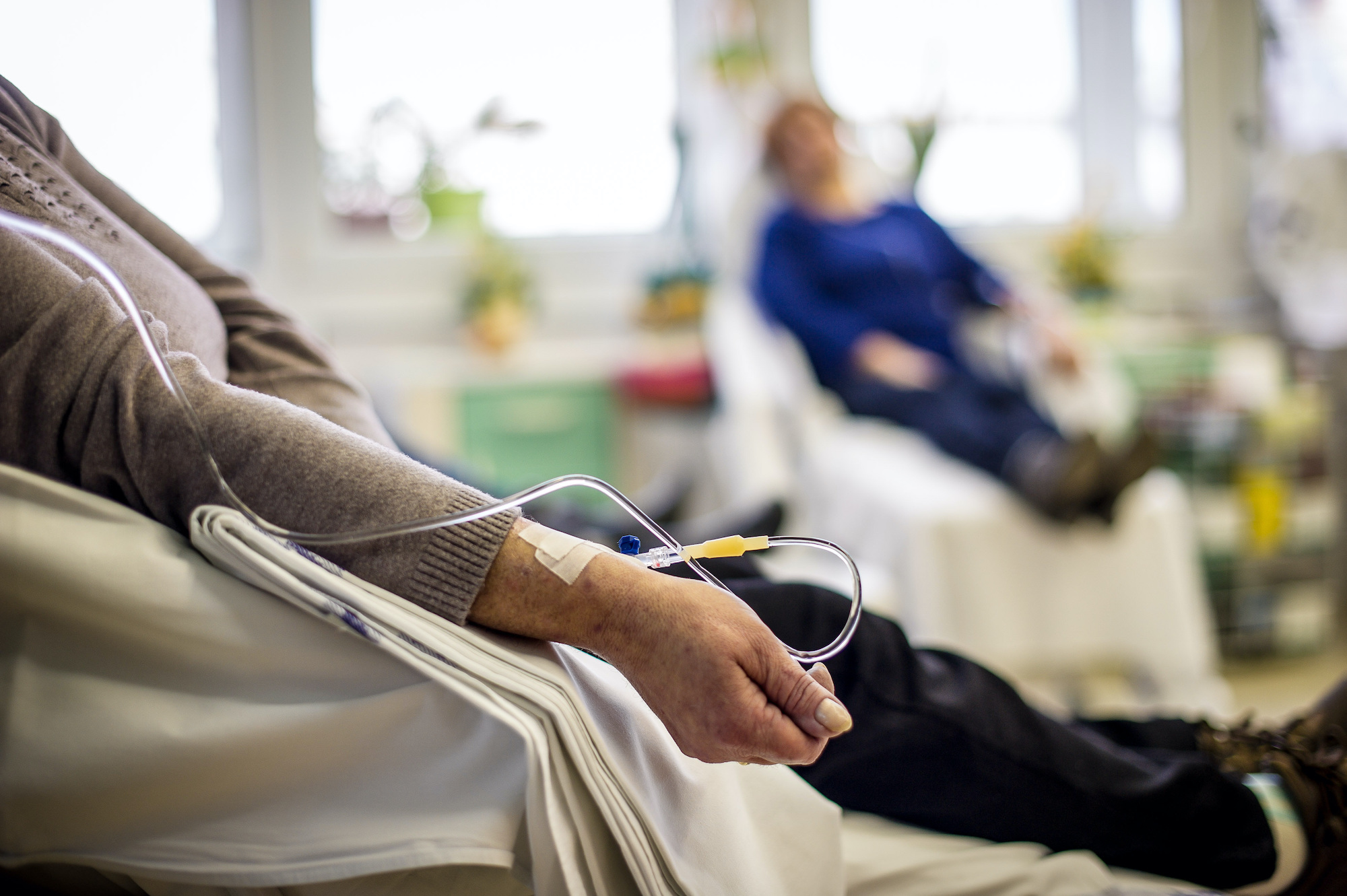In a typical patient, with the billions of cancer cells that are present, there is a wide range of genetic diversity. It’s from that pool that these very rare events are selected. Under the influence of chemotherapy or new targeted agents, out from that grows a cell that might just be one in a million, or one in a billion in the beginning, but over a period of weeks, months and sometimes years, will divide to the point that it becomes the dominant form of the cancer in the patient, one that’s now no longer sensitive to the drug that was originally used to treat it.
David Bowtell
The evolution of cancer medicine
David Bowtell, Co-head of the Women’s Cancer Program at the Peter MacCallum Cancer Centre, Melbourne, discusses the evolution of cancer medicine.Key Points
- • The biggest impediment for achieving durable control of cancer and cures for cancer is the evolution of drug resistance. The challenge is to develop strategies that allow us to overcome resistance – to delay it, to prevent it, or to deal with it.
- • One of the most striking observations of the past years has been the realisation of just how much diversity is present in the cancer of a typical patient.
- • We tend to think about chemotherapy as killing cancer cells because cancer cells divide rapidly and chemotherapy kills dividing cells. While that’s true, it’s only a small part of the reason why chemotherapy works.
- • Immunotherapy tackles the diversity in cancer by using the body’s immune system. By taking down the barriers that are stopping the immune cells from recognising the melanoma or lung cancer, you can achieve some very significant improvements in survival.
- • Technologies such as CRISPR, which allows us to read and write the code in really intricate ways, and the development of synthetic mRNA and DNA medicines, will usher in a new phase for cancer medicine.
Drug resistance
The biggest impediment for achieving durable control of cancer and cures for cancer is the evolution of drug resistance. We tend to think about evolution as something that happened millions of years ago, but evolution is all around us. We’re seeing it right at the moment, in the evolution of more resistant or more infectious versions of COVID. A familiar concept is the evolution of antibiotic resistance in bacteria. The same thing occurs in cancer in a patient: over time, the cancers develop resistance to the drugs that they’re treated with. This occurs because we satisfy the few key features that are needed for evolution to occur. The first thing is that there needs to be diversity in the population. There are millions and millions of cancer cells in a patient with disease; there has to be a selection pressure, and that’s in the form of chemotherapy. There has to be a fitness advantage for certain members of the population in the presence of that selection pressure, and that fitness advantage has to be inherited. In cancer patients, very frequently, those criteria are satisfied.
A recent discovery
One of the most striking observations of the last eight years has been the realisation of just how much diversity is present in the cancer of a typical patient. This was kicked off by experiments from Marco Gerling and Charles Swanton, and their colleagues about 10 years ago. They did a, conceptually, very simple but elegant experiment where they took an advanced kidney cancer and they divided it into small pieces. Then, they sequenced the DNA from each of those pieces. What they found was that there was a remarkable genetic diversity in those different places, and that the cancer had converged on certain mutations – certain errors in the code – independently, at different sites in the cancer that favoured its growth. That started the investigation of this diversity in a whole range of cancers. It’s proven to be the case not just in kidney cancer but also in breast cancer, ovarian cancer, colon cancer and others.

Professor Charles Swanton. Wikimedia Commons. Public Domain.
Cancer recurrence
For many patients, if you’re initially unable to cure them of their disease, the cancer has a very high probability of coming back. This is certainly true of ovarian cancer. The majority of women who have advanced disease – the cancer has spread through their abdomen – even when the cancer, or the majority of the cancer, is removed, the chances are that it will return within about a period of two years and become progressively resistant to the treatment that they may be given. What typically happens at that point is to switch to another drug. Sometimes that’s very successful; yet, sometimes the cancer has developed resistance not just to one drug but to many drugs, so the therapy is less effective.
How does chemotherapy work?
We tend to think about chemotherapy as killing cancer cells because cancer cells divide rapidly and chemotherapy kills dividing cells. While that’s true, it’s only a small part of the reason why chemotherapy works. Cancer cells, as they evolve, need to take down normal processes that, in a normal cell, would stop them from multiplying, that would force them to take a break and repair the code. Cancer cells ignore those signals to stop dividing when faced with DNA damage. So, when a patient is treated with chemotherapy, the normal cells in the patient take a break and they repair most of the damage. But cancer cells keep going, even in the face of that damage. As a result, that leads to a catastrophic accumulation of errors in the cancer cell, which is ultimately what kills them. So, we can cleverly take advantage of the mutations that occur in the cancer cells to specifically target them. Otherwise, there would be no way of treating the cancer. After all, it is part of us. To achieve that selective killing, we need to exploit the vulnerabilities that a cancer has that arise as a result of its development as a cancer in the first place.

Cancer patients receiving chemotherapy treatment in a hospital. By Goodbishop.
Immunotherapy
Another way that we can tackle the diversity in cancer is by using the body’s immune system. When we’re developing in our mothers, there’s a period of time where our immune system goes round and, essentially, does an audit. It says, ‘That’s me. That’s me. That’s me.’ After we’re born and we’re out in the environment, if a bacteria or a virus comes along and it wasn’t present during our development, it’s recognised as foreign. A cancer, though, is part of us, so, in principle, it shouldn’t be recognised by our immune system. But what happens when the code is corrupted is that the cell now starts to make proteins that are subtly different to the ones that we’re born with – and the immune system can recognise that. In cancers like melanoma or lung cancer, where there has been a huge amount of mutation and changes in the code, the immune system has lots of things to grab hold to. This is the area where immunotherapy has been most successful. By taking down the barriers that are stopping the immune cells from recognising the melanoma or lung cancer, you can achieve some very significant improvements in survival, and, in some cases, cures.
A history of cancer treatments
The history of cancer medicine has been one of surges and plateaus. In the 1970s it was the introduction and the optimisation of chemotherapy, for example for childhood leukaemia. It really changed it from a disease where almost all children died, to now the majority of them surviving. Also, the introduction of platinum-based chemotherapy for testicular cancer resulted in a huge benefit for that type of cancer. Then, we go into a plateau of consolidation and improvement in the existing treatment. Then, there’s a technology change and, suddenly, things go up again. In the late 1990s and in the 2000s, there was the introduction of personalised medicine and the idea of reading the sequencing cancer cells and using these targeted agents. The next phase has been in the development of immunotherapies, particularly over the last decade. So, there are these sorts of surges and then periods of consolidation. During the period of consolidation, we work out what works, what doesn’t work, and it then becomes rather protocol-driven, so we can have some certainty for particular cancers and particular treatments.

Pipette with fluid and test tubes for cancer immunotherapy research and gene therapy. By CI Photos.
Predicting the future?
When we think about where cancer research and treatment is going, it’s hard to predict the future, but perhaps a guide is to look to the past. Each of these surges in the improvements in cancer outcome have been driven by technology. So, the development of high throughput sequencing led to personalised genomics, which is now an established part of cancer care. The development of immunotherapies based on exquisite understanding of how the immune system works and how it’s controlled, both positively and negatively, led to the development of immunotherapies that are now part of standard of care for melanoma, lung cancer patients and other patient subgroups.
Personalised therapy was in the 2000s, and immunotherapy came of age in the 2010s. I guess the question is, what will it be in the 2020s? If I had to bet on anything, I would say we’re entering a period of maturation of nucleic acid medicine – medicines that are based on DNA and RNA. We’re seeing it at the moment, in the development of vaccines to COVID. The Pfizer BioNTech and the Moderna vaccines are based on modified mRNA vaccines. That’s a really good example of a medicine that’s based not on proteins or on small molecule drugs, as we’ve had over the last decades, but now based on nucleic acids. So, I think technologies such as CRISPR, which allows us to read and write the code in really intricate ways, the development of synthetic mRNA and DNA medicines, and the delivery vectors for those, will really usher in a new phase for cancer medicine.
The war on cancer
It’s a hackneyed phrase to talk about the war on cancer, but to me it feels a bit like that. It feels like a battle with advances and setbacks. There was a great deal of hype around personalised cancer medicine and targeted drugs; the setback has been the realisation that those improvements in therapy often only last for months to, sometimes, just a few years. So, acquired resistance is still the elephant in the room for cancer medicine. The challenge for us will be to develop strategies that allow us to overcome resistance – to delay it, to prevent it, or to deal with it when it occurs.
Discover more about
cancer medicine
Mileshkin, L. R., Posner, A., Pattison, A., et al. (2020). Identifying biomarkers to guide immunotherapy treatment of cancer of unknown primary. Journal of Clinical Oncology, 38(15).
Stover, E. H., Baco, M. B., Cohen, O., et al. (2019). Pooled Genomic Screens Identify Anti-apoptotic Genes as Targetable Mediators of Chemotherapy Resistance in Ovarian Cancer. Molecular Cancer Research, 17(11).
About David Bowtell
Here's how we use cookies
To give you the best experience, we tailor our site to show the most relevant content and bring helpful offers to you.
You can update your preferences at any time, at the bottom of any page. Learn more about how your data is used in our cookie policy.